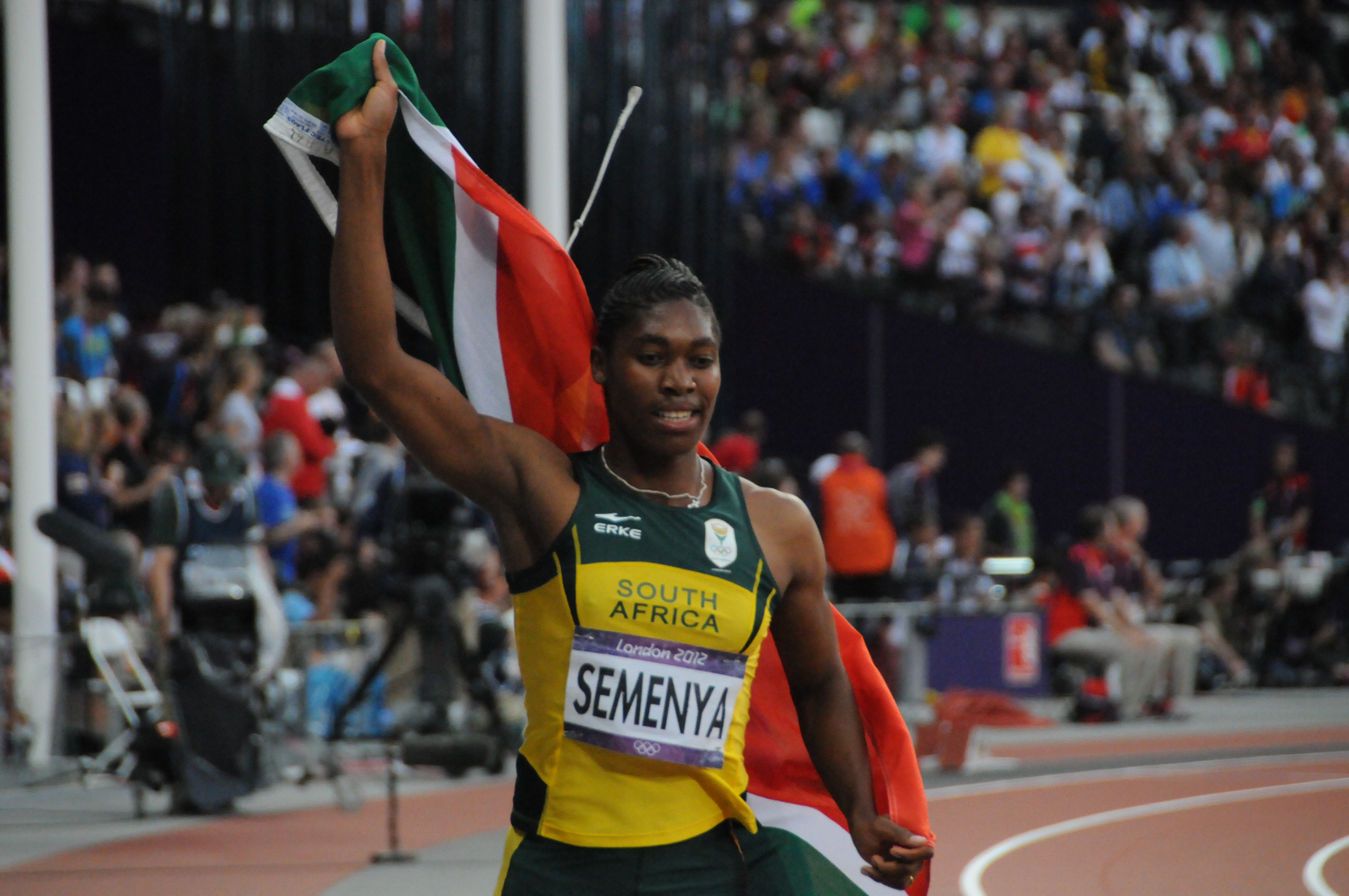Caster Views expressed in opinion columns are the author’s own.
In the 2016 Summer Olympics, Caster Semenya won the gold medal in an explosive women’s 800m. Instead of celebration, her performance sparked a wave of outrage. Semenya’s androgynous features led some to speculate she isn’t female. Leaked test results indicated testosterone levels far higher than other female athletes, which only fueled rumors that she was intersex — having a combination of biological traits typically characterized as “male” and “female.” I won’t speculate on Semenya’s biological sex. Doing so would be a gross invasion of her privacy. Regardless, the vitriol she has faced is a potent example of our bizarre fixation on gender in sports. Transgender, nonbinary and intersex athletes are still the frequent subjects of vicious, misinformed outrage.
The strictly policed dichotomy of genders in athletics does not respect competitors’ dignity or bodily integrity. Starting in November, women in track and field with high testosterone levels will be forced to medicate to reach some hormonal normal that, for them, is anything but normal. I’m not qualified to restructure all of sports to respect trans, nonbinary, intersex and otherwise gender-atypical athletes, but I can help fellow cis people (those whose gender matches that on their birth certificate) to not get so angry at women on TV. Here’s an easy guide on how to think through that rage.
Step One: Define biological sex.
We learn in middle school that there are two chromosomally defined sexes: male (XY) and female (XX). This is a useful simplification for students first learning about biology. However, like many other useful simplifications, it’s best understood as just that — simplified. Scientists now understand that sex is much more complicated. Rather than just those two chromosomal categories, sex is a spectrum determined by a complex combination of genes. Many people who exhibit nearly all of the traits as one sex possess a smattering of cells of the other. The binary we force athletes into is plainly unscientific, because sex cannot be neatly labeled as “male” or “female.”
Step Two: Consider the nature of sports competition.
Many argue that heightened testosterone levels give some women an unfair advantage. However, most top-tier athletes possess some unfair advantage over average people. LeBron James has a seven-foot wingspan, and Caster Semenya has high testosterone levels. These are biological factors that contribute to their success, but ones they have little control over. Rejecting exceptional anatomies runs against the core of competitive sports.
Step Three: Get over your irrational fear of transgender athletes.
A lot of misinformed cis people see transgender women as a threat to cis women in sports. We’ll put aside the ludicrous idea that a person would change their gender identity just to win a trophy. While more research is necessary, initial results suggest that hormone replacement therapy counteracts most of trans women’s physical advantage in athletics. The limited science we have now tells us that the harsh division of genders in sports can often be relaxed to fairly include transgender athletes. Whatever small physical advantage they may or may not still possess won’t be enough to bring down all of women’s athletics.
Step Four: Consider if the current system even meets the ideals of sports.
Gendered categories are unscientific, intersex athletes’ possible advantages are not unfair, and transgender women pose little threat to fair competition. It’s true that separating athletes by gender serves an important purpose in keeping events competitive and fair. However, we need to realize that rigidly policing gender in sports is harmful — both to competitors and athletics. It puts athletes’ gender identity into question, promoting the internet equivalent of angry mobs. In addition, it cuts against the most basic ideals of sports. Athletics are meant to celebrate the heights of human achievement. Requiring intersex athletes to medically lower their testosterone level or preventing transgender women from competing is antithetical to that ideal. If our gendered sports cannot accept the full range of human excellence, they are not serving their purpose. Transgender, nonbinary and intersex athletes will not destroy competition. They will broaden it.
Nate Rogers is a rising sophomore physics major. He can be reached at nrogers2@terpmail.umd.edu.



